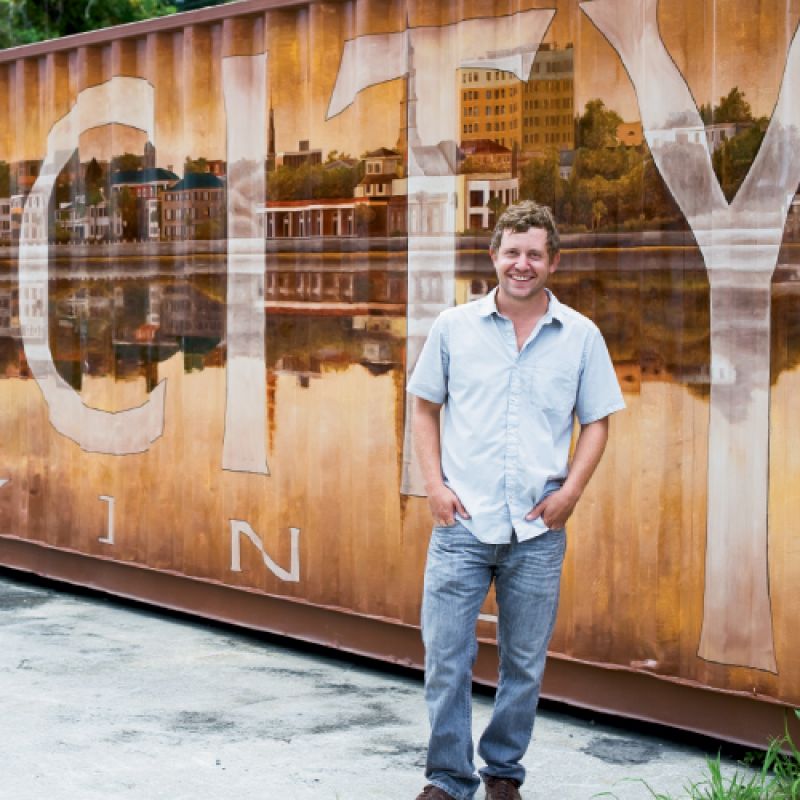
Visitors to Holy City Brewing are drawn like magnets to the shipping container at the back of its parking lot. A Charleston-scape sprawls across the metal, once and then again, reflected in the Ashley River. It’s the work of Sean Williams, a 2003 CofC studio art grad who’s gaining renown for his murals (his Avondale portrait of Charles Darwin was recognized on the website Street Art Utopia) and smaller works—primarily paintings on canvas depicting whimsical characters and abstracted maps of Lowcountry waterways. While working at Ahern’s Anvil, he forged beer taps for Holy City and thus a relationship with the business that led to the shipping container project, a mural on the brewery itself, and now, beer label artwork. Here, he spills the details on the sudsy creations and more.
Brewery partnership: Holy City’s general aesthetic coincides with mine as being rustic and salty, but classical. Having seen how passionate the owners are, I wanted to help their business, and they wanted to help mine.
Latest mural: I finished painting the front of the brewery this summer. I created a warped skyline—almost as if you’re looking from underwater—and started improvising, adding a pedicab and characters like jellyfish, flying squirrels, and a pterodactyl. It’s my surreal, fantasy vision of Charleston.
Beer labels: I painted the label for the new Pluff Mud Porter bottles—a guy turning up a pint of beer, not worrying that he’s knee-high in pluff mud—as well as the Slanted Porch Pale Ale and Washout Wheat, which will be in stores soon. I’m working on more labels as well.
His art: A lot of it is darkly comical and mysterious. And that’s what art is—delving into the unknown, not understanding what you’re doing but having faith that it does have a purpose and is meaningful.
Biggest influences: One is nature, whose processes are often similar to those of art-making. From a simple concept or form, a work of art evolves into something complex. This parallels the evolution of anatomy, for example, or a river as it begins with droplets and carves its specific path. The mystery of how and why things evolve interests me.
On the maps: I’m always looking at maps of waterways to find areas to kayak, so they are something I can relate to and use as starting points in exploring color combinations. I’ve been to most places in my works, so as I’m creating a river, I know what the landscape looks like. And when I visit a place I’ve painted, I know where I am in relation to my art. dRecent adventure: I spent weeks working alone on New York’s Shelter Island in the house where my mother grew up. My great-grandfather, Walter Cole Brigham, was a famous artist up there, and my grandfather was a boat builder who created a color people on the island call “Briggy Green.” I wanted to revisit their work and spend time experimenting.